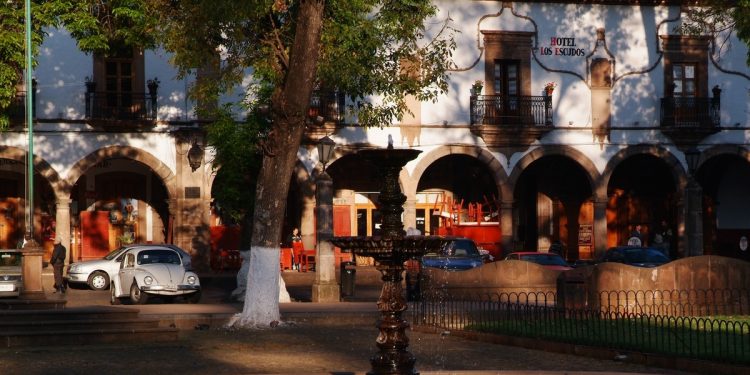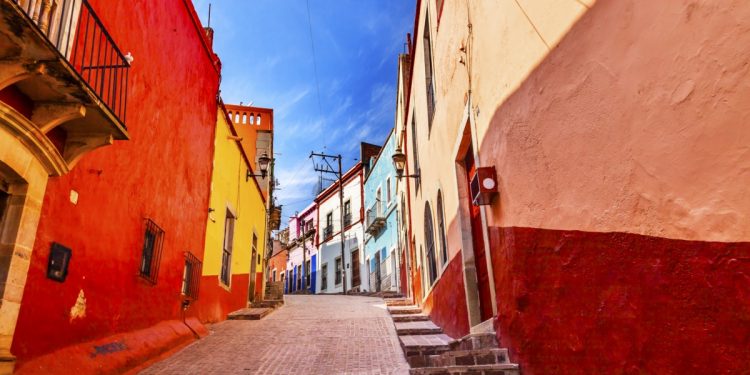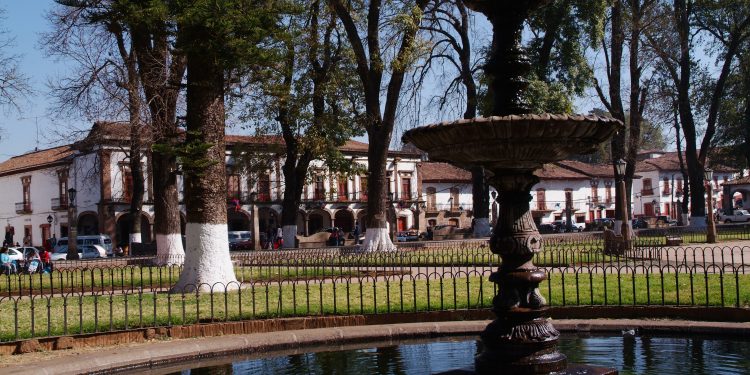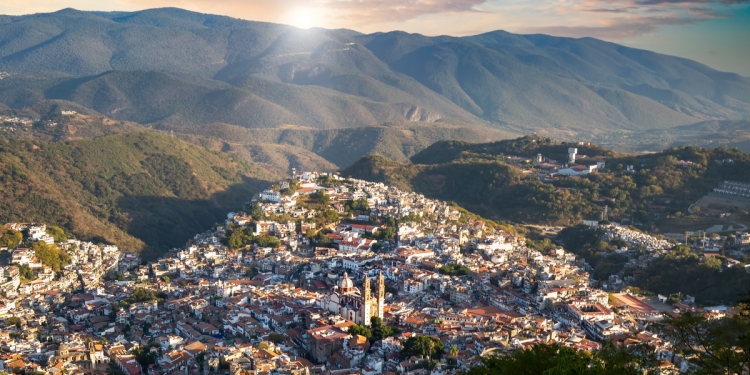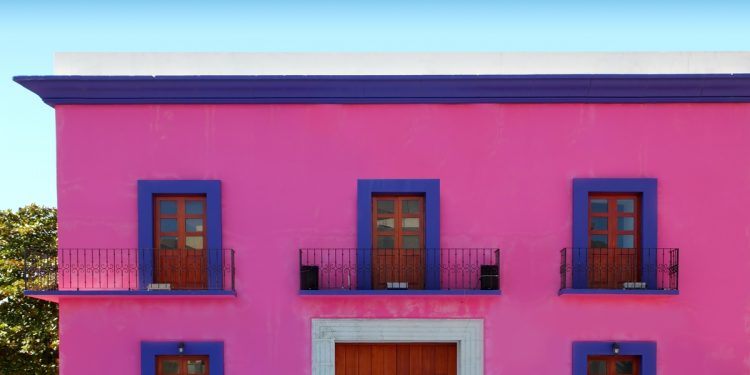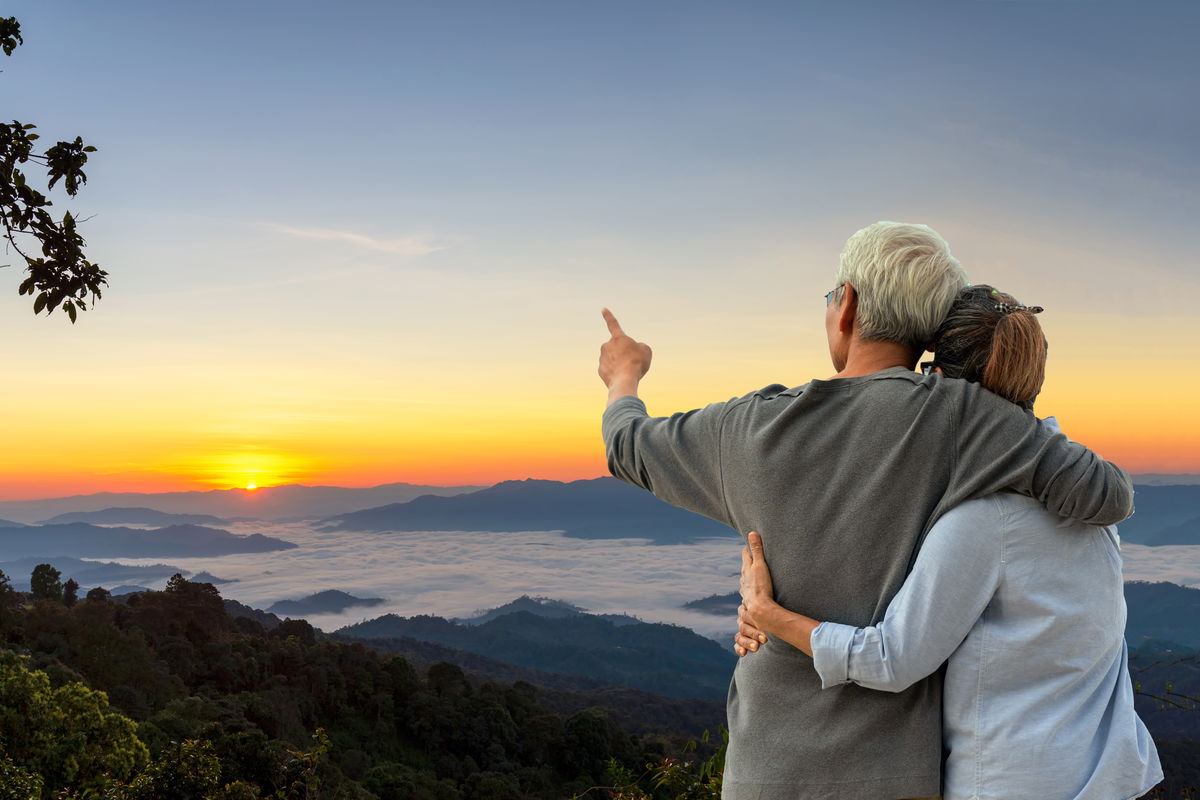Research and assess Pátzcuaro as a location for living, working or retirement in Mexico
Set in the forested mountains of Mexico’s western highlands, and situated on the southwestern shore of lake Pátzcuaro, this ancient highland settlement carries important historical and cultural roots, and is today a focal point for visitors —and, increasingly— foreign residents coming to this region. Offering a fascinating mix of colonial and indigenous traditions, the town is well connected to the state capital by road and offers unique lifestyle opportunities for people seeking to live in a rural setting amidst traditional local communities.
Living in Patzcuaro
Pátzcuaro (“Pahtz-Kuah-Ro”) is a charming town with a mixed colonial and indigenous feel, located about 45 minutes by road from Morelia, the state capital of Michoacán. Michoacán’s people are some of the friendliest and most welcoming in Mexico.
Patzcuaro at-a-Glance:
Location Type: Colonial
Population: 98,000 (2020 Census)
Elevation: ~7,000 feet above sea-level
Time Zone: Pátzcuaro is on Mexico’s Central Time Zone
Local climate: Highland, year-round temperate climate with noticeably cooler/chilled temperatures in the early morning and after sundown during the fall and winter months. See also: Local climate in this guide.
Rainy season: The rainy season in Pátzcuaro typically runs from May to October each year, sometimes spilling over into November.
Hurricanes: Pátzcuaro is inland and mostly unaffected by Hurricanes. When hurricanes land on the Pacific coast of the state of Michoacán, inclement weather can be experienced for a few days in the form of overcast skies and additional rainfall.
Local Economy: Tourism, agriculture, and artisan crafts
Foreign resident prevalence: Low*
Cost of Living: Lower*
Pátzcuaro on the map:
Discover Pátzcuaro on the map (Google Maps)
Local Travel Guide: Guide to Patzcuaro
*Relative to other foreign expat communities in Mexico
Since the turn of the century, an increasing number of foreign visitors have been discovering the town’s charm and ambiance, driven in part by its popularity as a base for visiting the Monarch Butterflies, and also Pátzcuaro’s long-standing reputation as being one of the top places in Mexico to experience Day of the Dead festivities.
Some of those visitors are returning here not only during the holidays, but also for extended stays, attracted by the town’s unusual charms and allure, to explore options for living and retirement off the beaten path and away from the high density of foreign residents that is often characteristic of the popular and established enclaves.
The city of Morelia, some 40km (25 miles) away, is an “aristocratic colonial city,”‘ whereas Pátzcuaro is an authentic colonial town which remains true to its indigenous Purépecha heritage.
The town has successfully blended its indigenous and colonial roots, creating a backdrop that provides a fascinating fusion of culture and social tapestries amidst an authentic and quite charming rural setting. In doing so, it provides an attractive hub for visitors to explore the town and nearby attractions, and also offers one of the most unusual and unique rural communities in which to live in Mexico.
The historic central area of Pátzcuaro, and its immediate surroundings, are the most attractive and often sough-after areas to live in. Picturesque colonial buildings and mansions featuring colorful courtyards with shaded terraces and nooks are built around the fine and elegant main square, the Plaza de Quiroga (also called the Plaza Grande) as well as a smaller, but no less attractive Plaza de Gertrudis Bocanegra—known locally as the Plaza Chica.
Highland mountain town with a serene environment
Patzcuaro is a quiet, low-key town set in the western highlands of Mexico, some four-and-a-half hours by road from two of Mexico’s biggest cities: Guadalajara and Mexico City.
The closest largest city is Morelia, the capital of Michoacán, and the place where most of the foreign residents living in Pátzcuaro go to buy foods, goods and services that are not available in Pátzcuaro.
Artists, writers, sculptors and those seeking peace and tranquility, as well as magnificent natural environments to be in, find Pátzcuaro suits their needs perfectly. Here, they find themselves away from the madding crowd yet close enough to access modern conveniences with efficient road connections, and an international airport about 90 minute away, offering direct flights to Mexico City and selected airports in the United States.
Although it is a small, semi-remote, mountain town, Patzcuaro offers reliable utilities including high-speed internet connections via fixed phone line or cable. If you want to live more remotely, satellite internet is readily available in the region.
Rural living and lifestyles in the heart of the Purépecha region
Patzcuaro and its nearly lakeside villages are one the country’s underexplored areas by foreigners seeking places to live in Mexico.
This ancient highland town offers residents an authentic character and charm, clean and crisp mountain air, surrounded by forests and lakes often framed by azure-blue skies and set against the backdrop an unmistakably rural environment.
For potential foreign residents seeking a place to live in Mexico, Pátzcuaro offers an opportunity to live and integrate within an authentic Mexican town; one that two decades ago was never on the radar of those seeking living places in Mexico, and which today is being discovered and settled by people who want to live in a mountain environment, relative close enough to modern amenities and far enough away from the commercialism that tends to engulf them.
The current density of foreign residents living in Pátzcuaro and its surrounding villages is low, and growing slowly. Future growth in foreign residency in the area will likely be propelled by the picturesque and charming facets of Pátzcuaro’s character, coupled with a growing interest in rural lifestyles. This rural region is not for everyone—as we have remarked elsewhere, rural living in Mexico is different and carries challenges along with its charms. If you’re not familiar with the area, a period of home rental to begin discovering its charms and compromises will be essential.
Cost of Living in Pátzcauro
The cost of living in Mexico is typically lower than it is the USA, Canada and Europe, although precise costs depend upon where you live and your lifestyle choices.
Living or retiring in the Pátzcuaro area is more affordable than the more popular expat enclaves; however, living costs have been increasing in this region and rents and property purchase prices have risen significantly over the last decade.
There are a couple of “mini-mart” supermarkets in Pátzcuaro offering an adequate range of everyday goods, and dozens of small, independently-owned stores and specialist food outlets.
There is a daily street market selling a plentiful supply of fresh fruits and vegetables, meats and poultry as well spices, condiments, and other everyday household foodstuffs. The market also has a cooked foods section, where you can purchase food to take away or eat at the market stall.
To access a wider assortment of goods and services, including large supermarkets, department stores, and specialist retailers that stock imported foods and goods which are not easily found in Mexico, you will need to travel to the city of Morelia.
Further insight about living costs in Mexico
Learn more about the living costs on our Mexico Cost of Living guide
Read the latest articles about money
Learn about Mexico’s currency
Real Estate in Pátzcuaro & environs
A wave of foreign buyers who discovered the town during the early years of the 2000’s created a property price boom in Pátzcuaro—funded mostly by equity they harvested from property inflation in their home countries.
This entire area is primarily an agricultural community that does not supply jobs or earnings which realistically support high property prices or rentals, and so it is the influx of outside investment —particularly wealthy Mexicans seeking countryside homes, and retirees and foreigners seeking a rural home in Mexico— that has driven market prices in recent years.
The historic center of Pátzcuaro remains the most popular area of the town to live in, and as well as being sought-after it’s also the most expensive. Some of the old colonial properties have been restored to their former glory and offer the charms of an bygone era with the amenities of the present-day comforts.
The question of whether to buy something ready to move into or restore an old property is moot, and ultimately a personal choice.
Some foreign expats who move to Pátzcuaro seek to purchase land upon which to to build a residential home. There is plenty of land for sale around Pátzcuaro, and also in the villages and hamlets that surround the lake. However, the days of bargain land prices appear to be over—even here in one of Mexico’s most rural settings.
The location provides a buying opportunity for people who want to make a long term commitment to the area. Real estate markets in rural Mexico are considerably less liquid (which means that sales turnover is lower and property typically takes much longer to sell than in more popular urban places) so an investment here requires patient capital.
The most traded types of property in the area include land (in the outlying areas of Pátzcuaro town and in the lakeside villages), derelict colonial properties requiring total restoration, older colonial properties requiring some restoration, fully restored colonial properties, and relatively new-build homes in contemporary residential neighborhoods dotted around the town outside of the historical center.
The more desirable properties are those situated on the town’s slopes, offering views across quaint red-tiled roofs, and the lakeside panoramas beyond; as well as colonial properties situated inside the historic center of town which forsake the views in lieu of the convenience of being situated in the heart of this beautifully-kept historic district.
Property is available for sale on some of Lake Pátzcuaro’s islands, most notably, Janitzio, but very few buyers seek this degree of isolation and most foreign residents live choose to live in Pátzcuaro town or one of the lakeside villages.
Our article about assessing house prices in Mexico gives further insights and connections to resources that will help you to gauge property values.
Home rental market in Pátzcuaro
Regardless of where you are planning to live in Mexico, we recommend you rent first to get a feel for the location, unless you are already familiar with it, its local communities, and the local year-round environment.
Finding a long-term house rental in Pátzcuaro can be challenging. Most rentals are vacation rentals, which tend to offer ‘turn-key’ homes, fully furnished and accessorized, primarily for short-term vacation renters—with rental rates that reflect that.
Locally-owned, often simply-appointed, houses offer the lowest rents. To find them, you can check property portals online, but more likely you’ll need to contact a local realty agent, or find other connections locally.
Reasonable rent rates can be sought if you want to rent here long-term and not buy, but you’ll need to make compromises. Talking to locals and cultivating helpful local contacts is a good way of finding the most affordable —and workable— housing for rent.
If you’re on a tight budget, you might find simpler accommodations in the area, of the type that you’ll need to furnish and spruce up at your own expense, but if you’re seeking a turn-key comfortable and efficient dwelling space for rent, you’ll need to search diligently and be prepared to pay a premium for it.
Note about Day of the Dead: Rental prices for vacation homes and short term rentals soar during Day of the Dead week—the weekends before, during, and after Oct 31 through Nov 2 each year. Pátzcuaro is one of the most visited towns in Mexico during this time; local hotels and Airbnb accommodations are after booked many months in advance, so advance planning is essential.
Our article about assessing house prices in Mexico gives further insights and connections to resources that will help you to gauge property values, including home rentals.
Learn more about real estate in Mexico
Mexperience offers lots of local insight about property in Mexico:
Comprehensive guide to Real Estate in Mexico
Learn about property rentals in Mexico
Latest articles about property and real estate in Mexico
Healthcare services in Pátzcuaro
In addition to Mexico’s state sponsored healthcare provided via the country’s national health service IMSS, good quality healthcare services offered through small private clinics with US-style healthcare services. For larger clinics and hospitals you will need to go to Morelia.
Hospitals/Clinics: There are some small hospitals and clinics run by Mexico’s IMSS healthcare program, including a maternity ward. Small private clinics that can deal with minor and moderate situations as well as private general doctor practices are also available.
Doctors: Private doctors can be consulted in town, and many will make house calls, too. Some might speak some English, but you ought to speak Spanish or take an interpreter with you on a first visit. Doctors can refer you to local and regional (public and private) clinics, specialists, and hospitals.
Dentists: There are various dental practices in Pátzcuaro; for more complex situations you may need to visit Morelia.
Opticians: There are several optometrists available offering eye tests, treatments, frames & lenses. For a wider selection, or more complex situations, you may need to visit Morelia.
The city of Morelia (less than an hour’s drive away) offers additional medical services and healthcare specialists if these are needed.
Learn more about healthcare in Mexico
You may find these resources on Mexperience helpful:
Health and medical insurance options in Mexico
Local climate in Pátzcuaro
Situated at over 7,000 feet above sea-level, Pátzcuaro offers a year-round mostly temperate climate, with noticeably cooler temperatures in the fall and winter, and warm, comfortable days during the spring and summer months.
The villages and hamlets surrounding the nearby lake tend to exhibit microclimates of their own, and may be a few degrees warmer or cooler than Pátzcuaro town center, influenced by the water and prevailing climatic conditions in the wider region.
In the fall and winter months, daytime high temperatures average around 70F (21C) and nighttime lows average around 39F (4C).
In the hottest spring months, daytime high temperatures average around 80F (27C) and nighttime lows average around 50F (10C). Summer-month high temperatures are lower than the spring highs, tempered by the rainy season that typically runs from May to October each year, sometimes spilling into November.
Further insights about weather and climate
Pátzcuaro monthly temperatures and rainfall (Google)
Pátzcuaro & environs essentials
Connect to practical information and gain insights about living and lifestyle in and around Pátzcuaro, Mexico
Pátzcuaro articles and guides
Connect to more articles and guides about Pátzcuaro here on Mexperience
Nearest airport to Pátzcuaro
Pátzcuaro and lakeside villages and served by Aeropuerto Internacional General Francisco Mujica (MLM). The airport is situated about 60 miles (98km) from the center of Pátzcuaro—about 1.5 hours by road, depending on local traffic conditions. Check FlightConnections.com for current routes.
Pátzcuaro map
Explore Pátzcuaro on Google maps
Getting around Mexico
Transportation choices in Mexico
Communications in Mexico
Stay in touch when you’re in Mexico:
Money and banking services in Mexico
Learn about money management and banking in Mexico
- Guide to Money and Banking Services in Mexico
- Latest articles about money and currency in Mexico
Driving in Mexico
Learn about driving and road trips in Mexico
Health and safety in Mexico
Connect to articles and resources about health and safety matters in Mexico
Mexico in your inbox
Our free newsletter about Mexico brings you a monthly round-up of recently published stories and opportunities, as well as gems from our archives.

